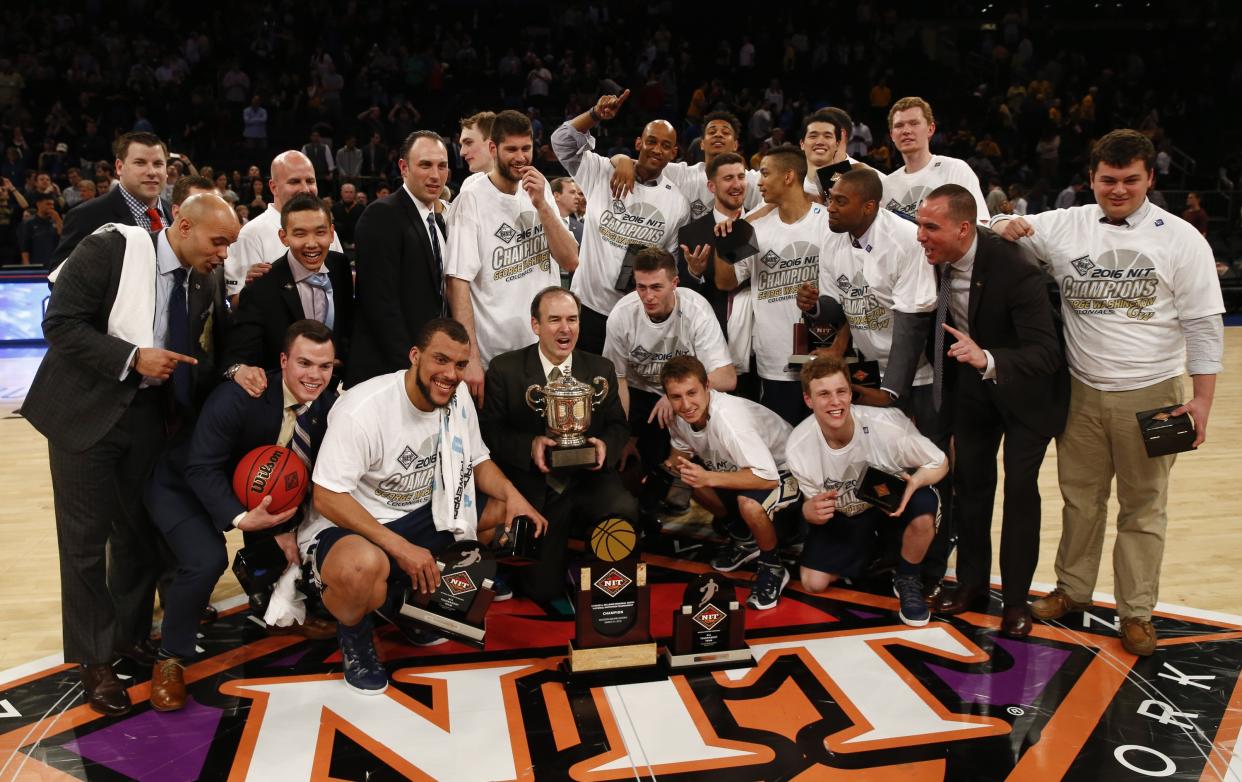Deeper 3-point line among new experimental rules for NIT

The NCAA will once again use the National Invitation Tournament (NIT) as a way to experiment with some potential basketball rules changes.
Most notably, the games will be divided into four 10-minute quarters instead of two 20-minute halves. Also, the three-point line will be extended to the distance used by FIBA in international competition — 22 feet 1.75 inches. The NCAA three-point line is 20 feet, nine inches.
Here are the four rules modifications:
• The three-point line will be extended by approximately 1 foot 8 inches to the same distance used by FIBA for international competition (22 feet 1.75 inches).
• The free throw lane will be widened from 12 feet to 16 feet, consistent with the width used by the NBA.
• The games will be divided into four 10-minute quarters as opposed to two 20-minute halves. Teams will shoot two free throws beginning with the fifth foul of each quarter.
• The shot clock will reset to 20 seconds after an offensive rebound instead of the full 30 seconds.
This is the third time in the last four seasons that the NIT will be used to test out potential rules changes. The NCAA aims to give the Rules Committee, Oversight Committee and Competition Committee more data in advance of the next playing rules cycle, which ends May 2019. That is the earliest date any potential changes could be implemented.
The goal is to see if any of these changes — shot clock and foul implementation rules, especially — could improve the overall pace and flow of the game. With 20 minutes halves, teams often enter the penalty with double-digit minutes remaining in a half, which can bring the game to somewhat of a halt. Resetting a team’s number of fouls back to zero at the beginning of a new quarter could resolve that. Also, resetting the shot clock to just 20 seconds instead of the usual 30 seconds after an offensive rebound could potentially reduce overly long possessions.
The widening of the free-throw lane, the NCAA says, could “reduce physicality and create more driving opportunities.”
“The style of play in men’s college basketball is healthy and appealing, but the leadership governing the game is interested in keeping the playing rules contemporary and trending favorably,” said Dan Gavitt, NCAA senior vice president of basketball.
“Experimenting with two significant court dimension rules, a shot-clock reset rule and a game-format rule all have some level of support in the membership, so the NIT will provide the opportunity to gather invaluable data and measure the experience of the participants.”
In the past, rules tested during the NIT have later been implemented, including reducing the shot clock from 35 to 30 seconds.
The NIT is set to begin March 13 with the semifinals and championship game being played at Madison Square Garden in New York City on March 27 and 29.
“The NIT is an exciting event with a rich tradition and history, yet it also provides us a platform to consider how the game might look in the future,” Gavitt said. “We’ve seen the adoption of recent experimental rules and how they have had a positive impact. This track record of the game evolving is a result of us having the flexibility to see if the rules work and are met with satisfaction, so we appreciate the support and partnership for the good of college basketball from our membership and our broadcast partners at ESPN.”
– – – – – – –
Sam Cooper is a writer for Yahoo Sports. Have a tip? Email him or follow him on Twitter!


